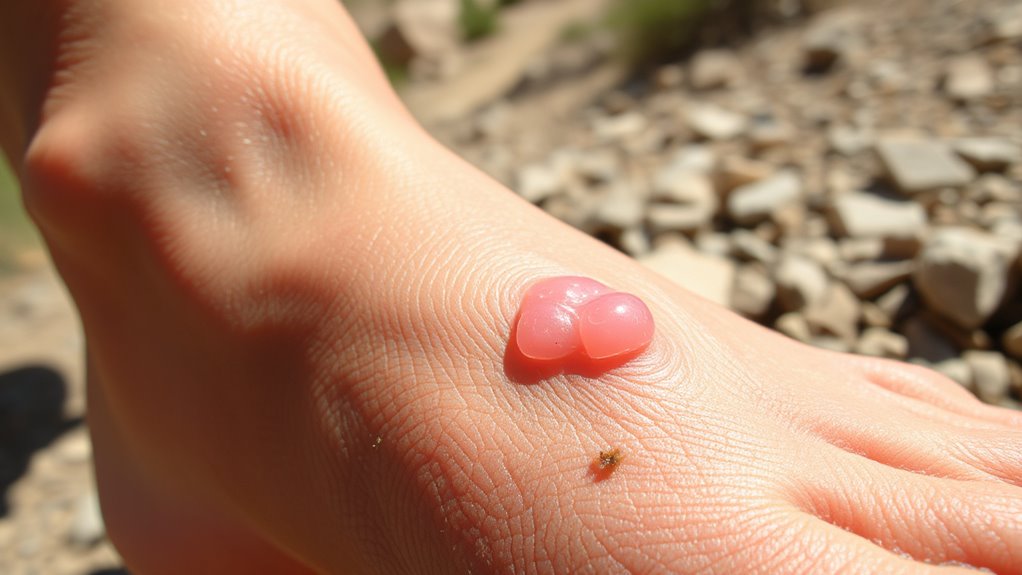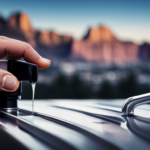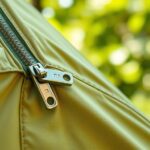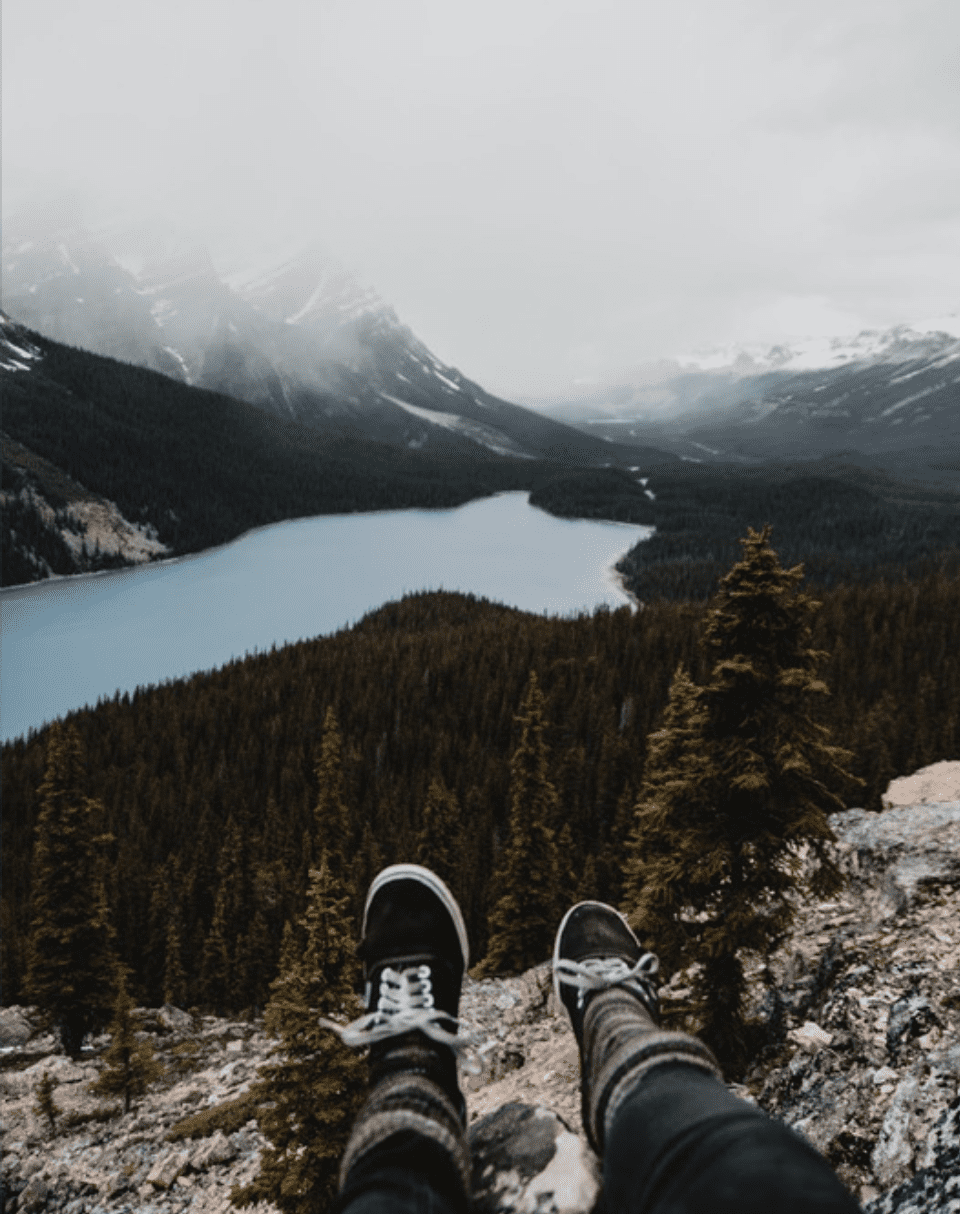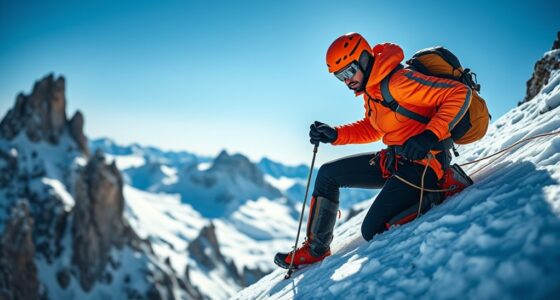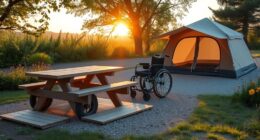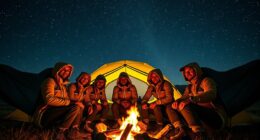On a day-three hike, your skin’s main goal is to resist micro-tears caused by friction. To do this, you need well-fitting shoes and moisture-wicking socks to reduce rubbing. Applying lubricants or taping hot spots can prevent blisters from forming. Keeping your skin healthy, hydrated, and inspecting regularly helps strengthen its resilience. If you stay aware and take early action, you’ll minimize discomfort and keep moving smoothly—learn more about protecting your skin during hikes.
Key Takeaways
- Healthy, hydrated skin maintains elasticity, reducing micro-tears and the risk of blister formation during extended hikes.
- Managing friction through proper footwear, socks, and lubrication minimizes skin micro-injuries.
- Early detection of hot spots allows prompt intervention, preventing blister development.
- Regular skin inspection and moisture control keep skin resilient against repeated rubbing.
- Protective measures like taping vulnerable areas help shield skin from ongoing friction on day-three hikes.
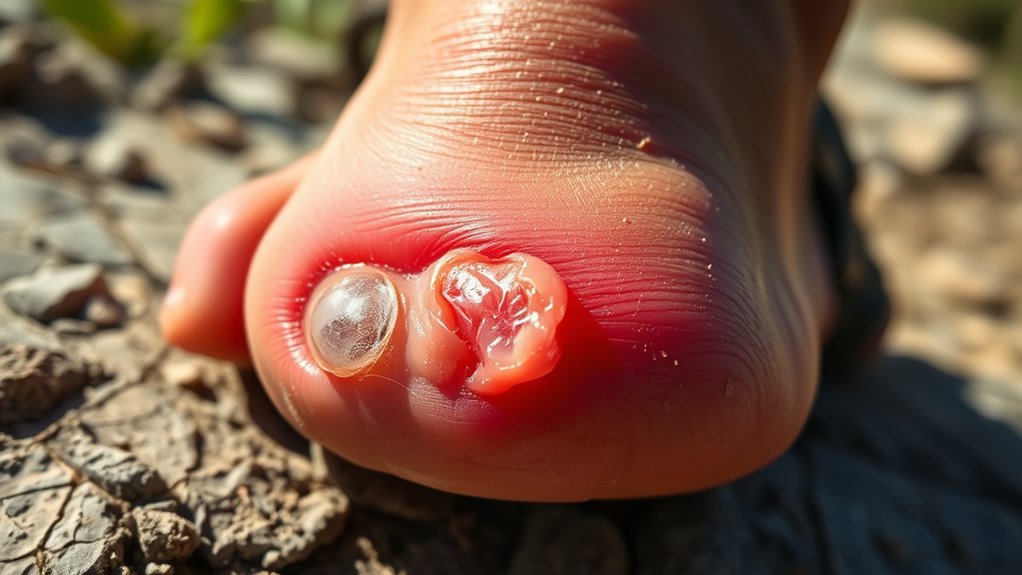
Have you ever wondered what exactly happens when a blister forms? It all comes down to friction dynamics—those tiny, repeated rubbing motions that your skin endures during a long hike. When your footwear isn’t perfectly fitted or your socks shift with each step, friction between your skin and the shoe surface increases. This constant rubbing creates micro-tears in the outermost layer of your skin, known as the epidermis. Over time, these tiny injuries cause fluid to accumulate between the layers, forming a blister as your body’s way of protecting the damaged tissue underneath. Understanding these friction dynamics helps you grasp how blisters develop and, more importantly, how to prevent them.
Friction causes micro-tears in skin, leading to blisters during long hikes.
Blister prevention starts with managing the friction that causes these injuries in the first place. Proper footwear is your first line of defense. Shoes that fit well—neither too tight nor too loose—reduce unnecessary rubbing. When shoes are too loose, your foot slides forward with each step, increasing friction at the heel or toe. Tight shoes, on the other hand, cause constant pressure, especially if they pinch or rub against specific spots. Wearing moisture-wicking socks also plays a vital role. Wet socks increase friction even more, making your skin more vulnerable to tears. Double-layer socks or specialized blister-resistant socks can create a buffer, decreasing the direct contact between your skin and the shoe, which markedly reduces blister risk.
Another key aspect of blister prevention involves paying attention to hot spots—those areas that start feeling sore or tender after a few miles. As soon as you notice a hot spot, take action. Stop and adjust your socks or shoes to minimize friction. Applying lubricants like petroleum jelly or specialized balms can also help by reducing the skin’s resistance to rubbing. Additionally, taping vulnerable spots can create a barrier, preventing micro-tears from forming. Hydration and skin care are often overlooked, but keeping your skin healthy and supple makes it more resistant to friction and tearing. Regularly inspecting your feet throughout the hike allows you to catch early signs of irritation before a blister develops.
Being aware of the materials of your gear, such as using home security systems to secure your belongings, might seem unrelated, but it underscores the importance of proactive measures to protect what’s valuable—whether it’s your skin or your home. Ultimately, understanding friction dynamics and taking proactive steps can save you from painful blisters on day-three hikes. By selecting proper gear, adjusting your equipment as needed, and paying close attention to your skin’s response, you can maintain blister prevention strategies that keep you moving comfortably. Remember, your skin is your body’s first line of defense, and caring for it with mindful prevention techniques ensures your hiking adventure remains enjoyable, not interrupted by painful blisters.
Frequently Asked Questions
How Do Different Footwear Materials Affect Blister Formation?
Different footwear materials impact blister formation based on moisture management and breathability. Leather and mesh allow better airflow, helping keep your feet dry and reducing friction, which can cause blisters. Synthetic materials may trap moisture, increasing the risk. Choosing shoes with good breathability and moisture-wicking features helps prevent blisters and keeps your feet comfortable during long hikes. Always consider these factors when selecting footwear for extended outdoor adventures.
Can Diet Influence Blister Healing and Prevention?
Think of your body as a well-oiled machine, and nutrition as its fuel. Yes, your diet can influence blister healing and prevention. By following nutrition tips like eating foods rich in zinc, vitamin C, and collagen, you support skin repair. Consider dietary supplements if your diet lacks these nutrients. Staying hydrated also keeps your skin resilient, giving your skin the strength it needs to withstand those pesky blisters on your hikes.
What Are the Signs of Infection in a Blister?
You should watch for infection symptoms in a blister, like increased redness, swelling, warmth, or pus. These signs mean the blister isn’t healing and needs attention. To improve blister prevention, keep the area clean and dry, and avoid popping blisters unnecessarily. If infection symptoms develop, consult a healthcare professional promptly to prevent complications and promote proper healing. Recognizing these signs helps you stay safe on your hike.
How Does Climate Impact Blister Development During Hikes?
Imagine warm sun and cool breezes working against you. Climate impacts blister development when moisture levels rise, making skin soft and prone to friction. Temperature fluctuations cause your skin to expand and contract, increasing irritation and blister risk. On hikes, hot, humid days amplify moisture, while cold or windy weather can dry out skin, both heightening your chance of blisters. Staying mindful of these factors helps you prepare better and avoid discomfort.
Are There Any Long-Term Skin Changes After Blister Healing?
After blister healing, you might notice some long-term skin changes like blister scarring, which can be a permanent reminder of the injury. In more severe cases, nerve damage could occur, leading to reduced sensation or heightened sensitivity in the affected area. These changes depend on the blister’s severity and how well you care for your skin during healing. Proper treatment helps minimize long-term effects and supports skin recovery.
Conclusion
Now that you understand what causes blisters and how your skin fights back, you’re better equipped for those rugged hikes. Think of your skin as a battlefield—every step a charge, every blister a sign to listen more closely. By giving your skin what it truly needs, you’ll not only hike longer but also keep your journey smooth. Remember, your skin’s survival depends on your choices—treat it well, and it’ll keep you moving forward.

